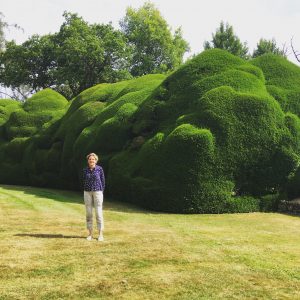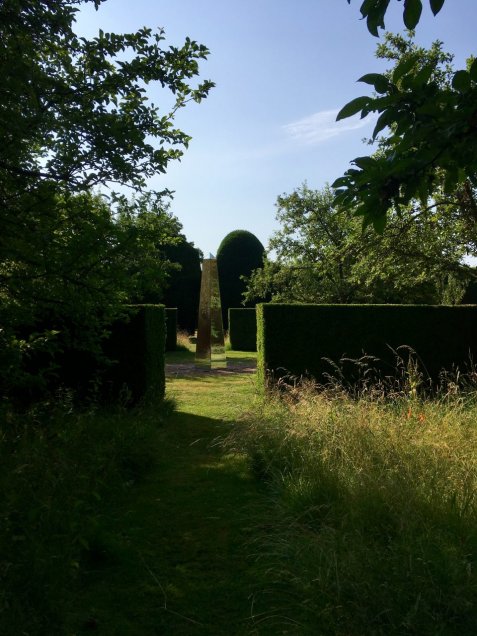Doddington Place
Posted by Catharine on July 31st 2018I had an idea to go and volunteer labour in gardens of whimsy and interest to soak up history, horticultural skills and the genius loci. Doddington Place was my first choice. I was welcomed by the owner and the head gardener and enfolded into the garden for a few days, becoming part of the place.
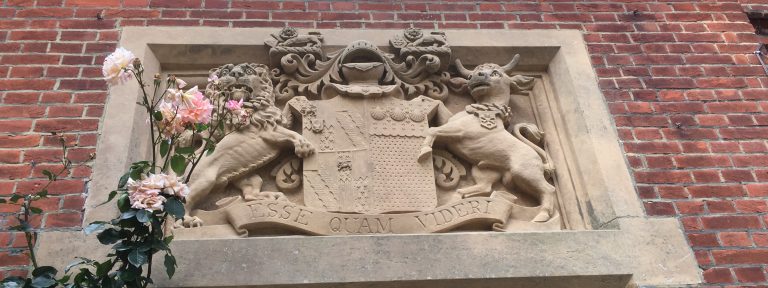
Here is its story: In 1906 General and Mrs Douglas Jeffreys bought the house for the view. Below a haha that runs along the generous front of the house Kent rises and rolls away, fatly treed and not a house in sight. Then only 36 years old and previously owned by the Croft family whose motto rules the south facade, it is a proper Victorian timepiece: high ceilinged and embedded in its parkland. The grounds were laid out in the fashion of the day with a Wellingtonia avenue and vast jam tarts of parterres for the latest exotics to be displayed round the house.
Mrs Jeffreys swept away the jam tarts and got to work on a Rock garden. Boulders of Kentish rag were heaved into place and frame the view of fields and woodland. A Sunken garden (complete with spouting water feature and Irish yews) was laid to the south of the house and round about 1 linear mile of yew hedging planted. Her energy ran to the house too which got a baronial entrance hall
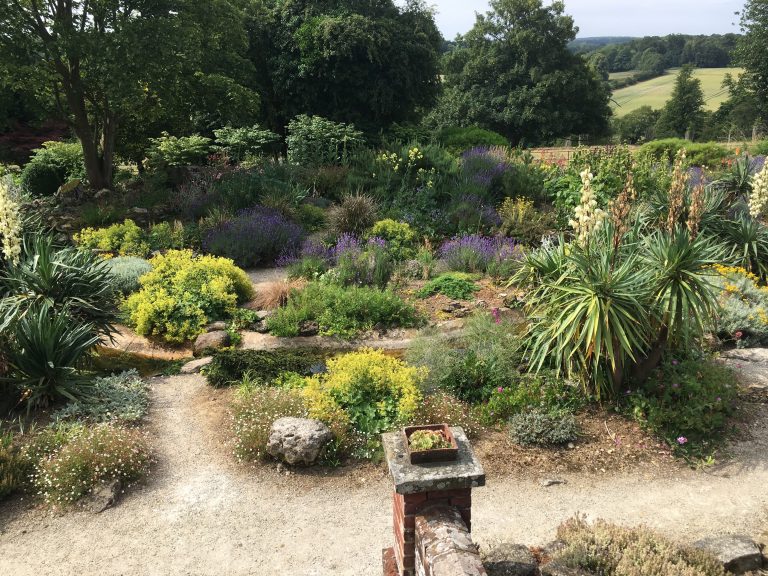
added on. Inside you are on a stalking holiday and outside under crenellations embossed by a Welsh motto “Every Morning to God”.
And there time might have stood still with the upkeep of these areas keeping any gardeners hard at it. But no. Uncle Jack inherited the estate in 1954 and despite energetic pursuit of politics he winnowed out a vein of acidic soil in part of the garden and made a woodland garden linking the wellingtonias to curvaceous yews. It shouts out in colour as a spring garden stiff with rhododendrons, camellias and early perennials.
It is all in the family for Amicia’s husband Guy Oldfield is descended from that original couple and I sensed that the indomitable Mrs Jeffreys, better known as Aunt Maude, stalks about as a ghostly presence.
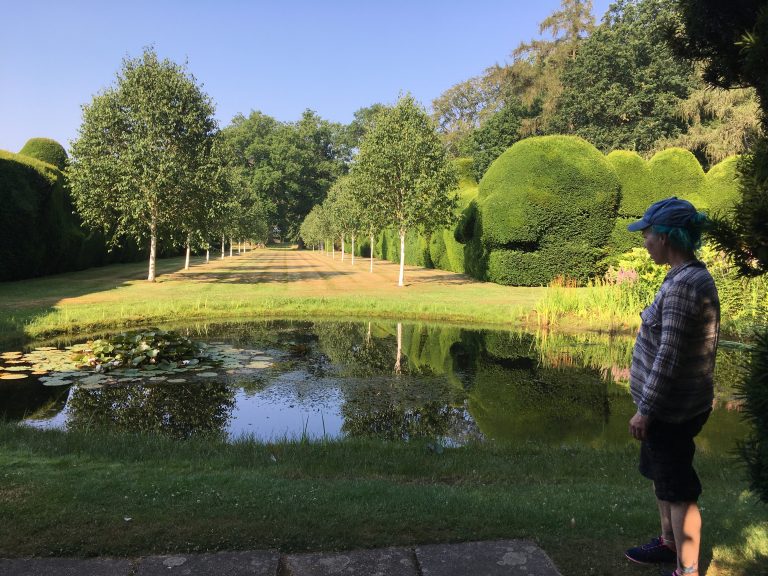
As I was being shown round we came to a pond as clear as a pier glas with a 60s egg-timer waist. We stood and gaped at the dive-bombing dragonflies. At that moment Posy, former gardener here and now a designer of some note, hove into sight to get tiny pond floaters to take to a customers’ new pond – appropriately enough the pond owner is a Croft descendant.
Next we reached the Sunk Garden. The garden tour Amicia gave me is a series of memories of the people that made, laid out, devised or gardened the spaces. This Sunk garden bit in its new shimmery show girl look is the work of a friend of the owners, Kirsty Knight Bruce, who over 2010-11 caused the design and replanting of a series of borders here in lush and colourful style with a terracotta army white cosmos marching round the pond itself. Kirsty is “a consummate plantswoman who understands colour”.
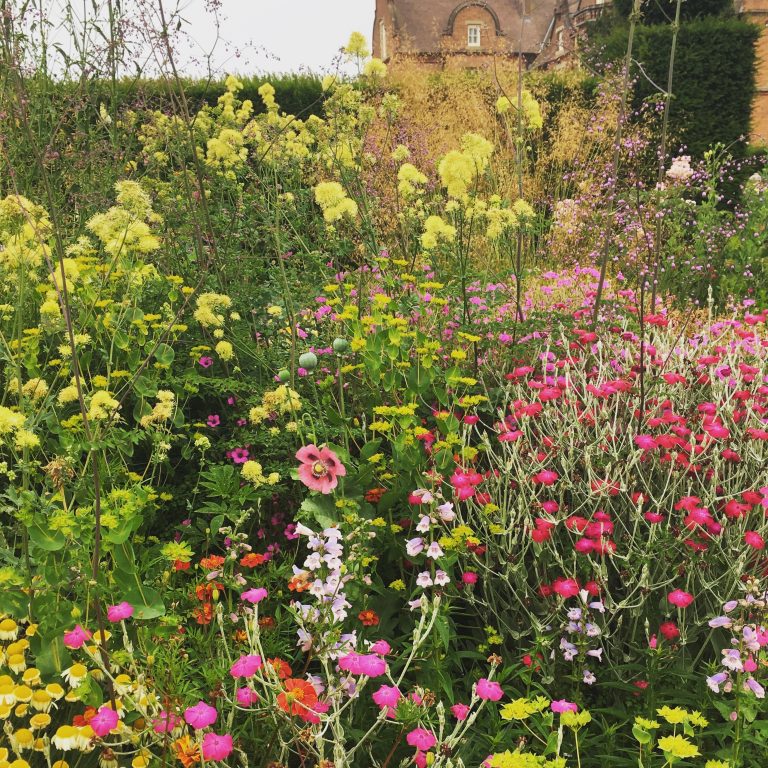
I look her up and find that she is in the posher end of garden makeovers with a discreet and under -advertised list of statelies to her portfolio. Colour is indeed it – Geranium psilostemon, Heliopsis helianthoides summer nights, Lychnis coronaria and Cephalaria gigantia where the soft yellow of this giant species is echoed in a sub cast of different scabious: maroon, pinks and blue. Grasses are confined to the giant sparkler effect of Stipa gigantea.
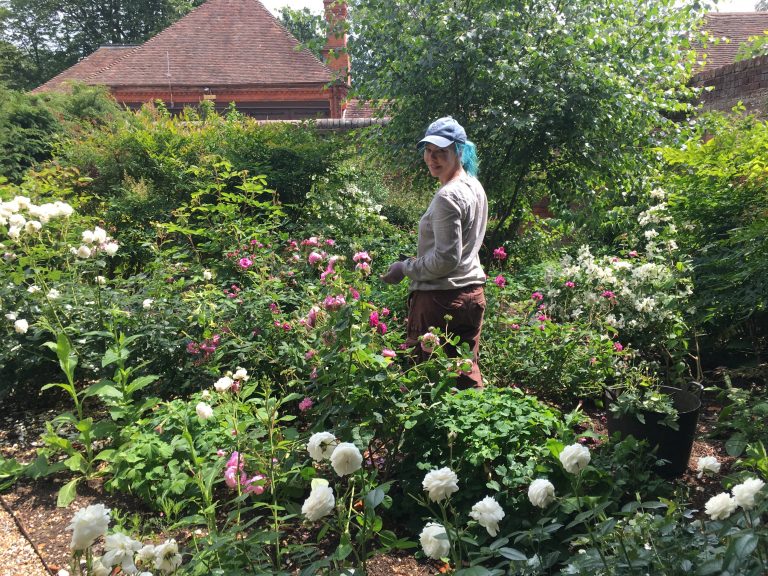
The colouring is strong and true throughout the borders round the garden by annuals being popped in. And here a drum roll to Lucy Adams who first came to Doddington just after Kirsty’s borders had gone in. Lucy is head gardener and in this role reminds me of the ring master: propagator, curator, renovator and plantswoman. It is no surprise to learn that her first training was in fine art.
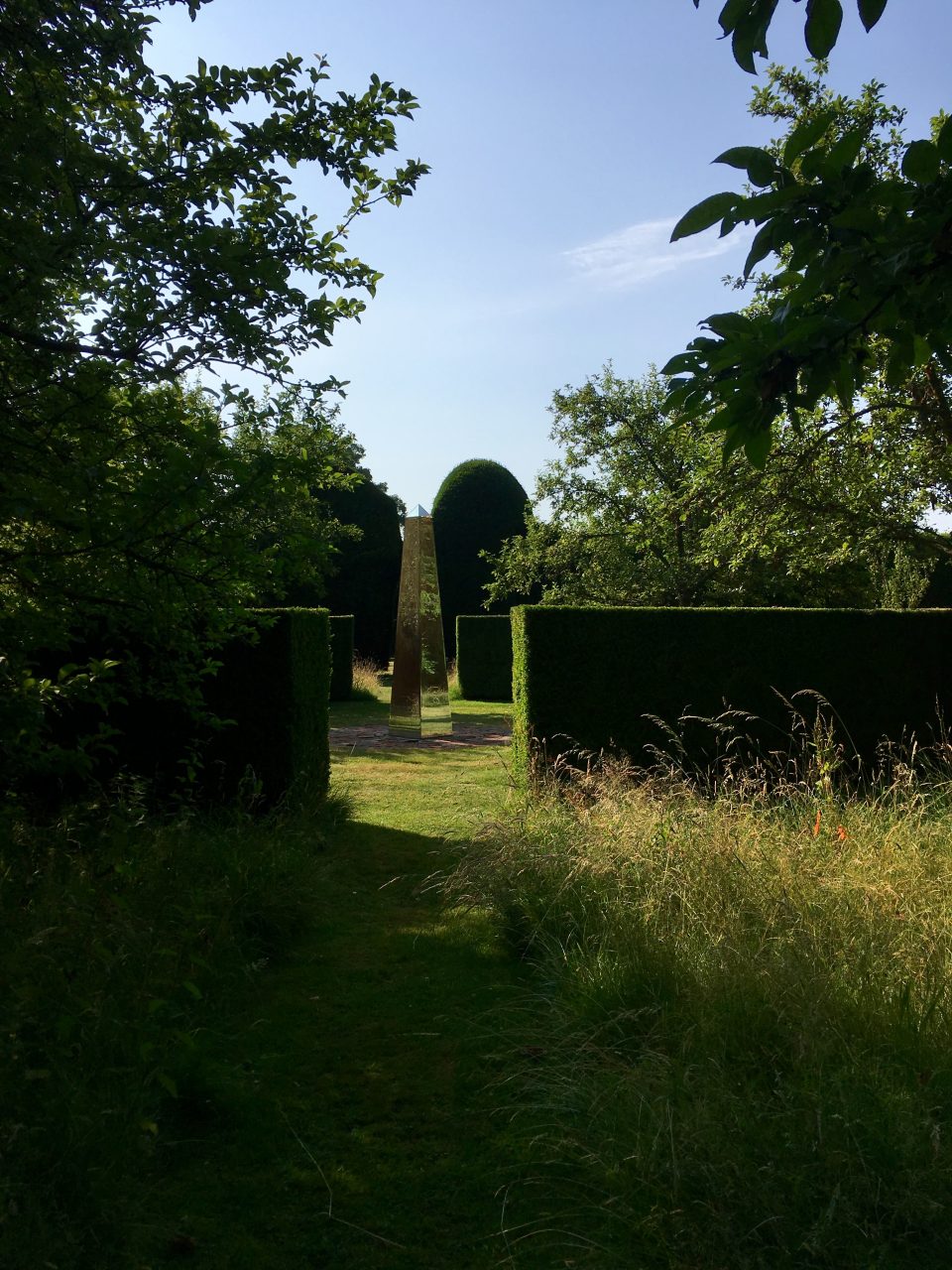
All is done with a painterly eye and attention to detail. Take that mile of yew hedges (more about them below) – these alone take her and fellow gardener David 8 weeks on the gantry of a cherry picker to clip. Do they dread the job? Not at all. What about deadheading the 800 cosmos by the pond? Keeping on top of this might be more of a challenge. The ornamental garden, apart from an inner secret Kitchen garden mainly planted to roses, is open at least 2 days a week from April to the end of September.
This gives the strict mandate of keeping the flowers on the teetering edge of perfection to make the visitor experience a total satisfaction. A man from Belgium was astonished at quite how floriferous it all is. Gardening work is done delicately . Early summer is a battle for the hoe to win and then the perennials and roses fill the borders up and it is matter of deadheading, staking the droopy perennials, adding layers of display by adding annuals.
